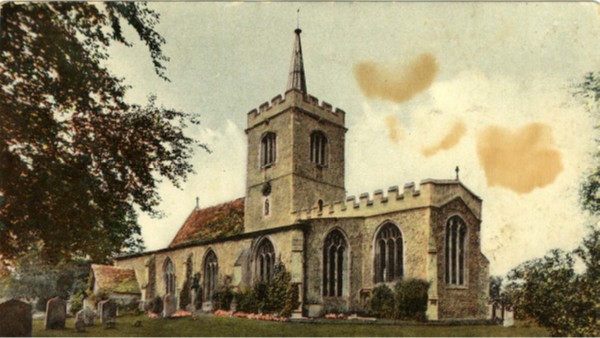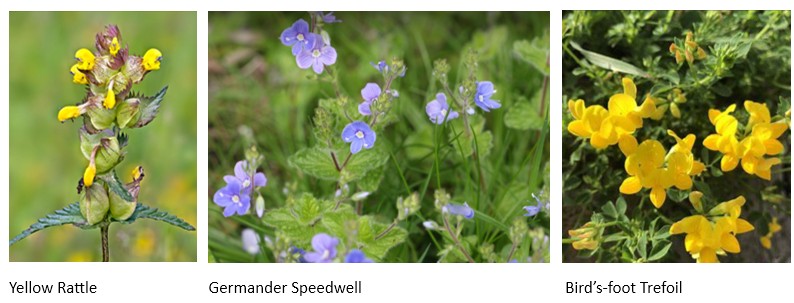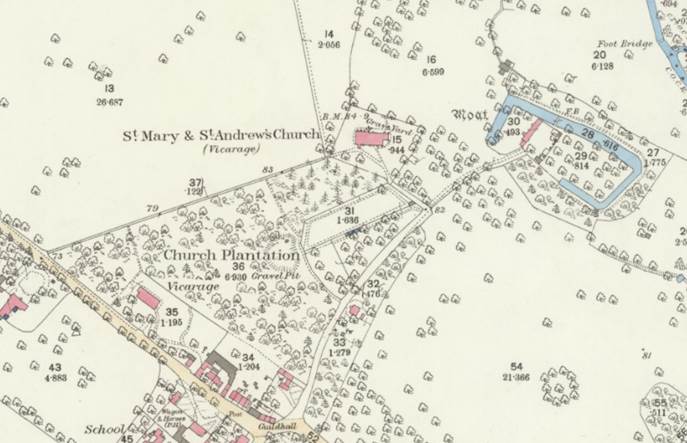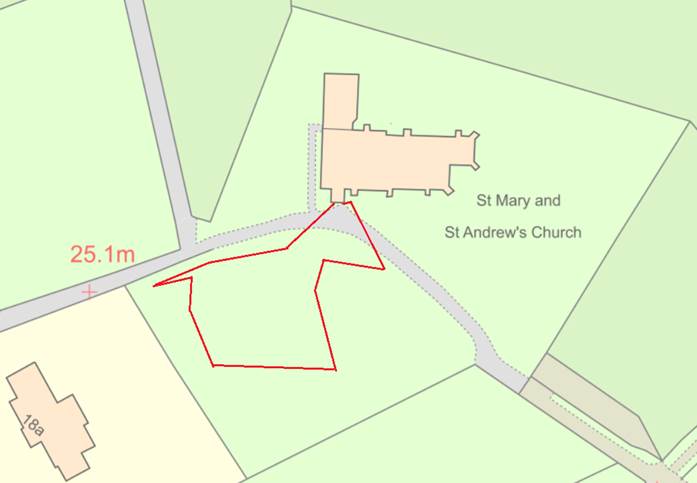Nature Trail 1: St Mary and St Andrew’s Churchyard
Eco Whittlesford Nature Trail 1: St Mary and St Andrew’s churchyard

Twenty minutes of thorough exploration. Grass and gravel underfoot. Suitable for buggies. Most flowers will be seen in May/June.
Starting Grid reference: TL 47360 48563; XY: 547360, 248563; Lat-Long: 52.115756, 0.15072422;
What3Words: ///glory.orbited.wires
This and other nature trails can be found at www.ecowhittlesford.org.uk/nature-trails
Step 1
Starting in the church porch with your back to the door, turn left along the gravel path.
Look out for:
- Warty cabbage, with masses of small yellow flowers, growing in the grass. A full list of plant species is to be found below.
- The large copper beech tree in the corner of the church yard, with its purple leaves, provides food for ‘treble lines’ and ‘beautiful hook-tip’ moths. More than forty species of moth have been recorded in the churchyard on one night in May. The full list of species is to be found below.
- In summer you may be able to hear the sound of swifts ‘screaming’ overhead. These small birds migrate from Africa each year to eat our insects and airborne spiders, but their numbers are declining rapidly because the cracks in house and church rooves that they nest in disappear when buildings are renovated. A nest box has been installed in the church tower, and the sound you hear is probably the recording that is being played to lure them in so that they find their way to it. They were seen investigating the nest box in 2023, so it’s hoped that they will move in soon…
Step 2
Leave the gravel path at the large wooden bench on your right, and with the bench behind you, take the righthand-most of the mown paths towards the commonwealth war graves.
Look out for:
- Common mouse ear, a low growing plant with tiny white flowers.
- Dove’s Foot Cranesbill, with five delicate pink petalled flowers.
- The blue flowers of Germander Speedwell (pictured).
- To your left there is a group of three trees that contains an elm tree. Its finely ribbed leaves are slightly hairy and shiny. Although most elms have fallen victim to Dutch Elm disease, this one has probably survived so far because it is isolated, and the beetle which carries the fungus hasn’t found it.
- Some of the graves have tiny sedum succulents growing on their gravel – the same plant that is now often used for green roof installations.
Step 3
Find Sir Hamilton Kerr’s grave: he was a journalist and politician who donated the building for the Hamilton Kerr institute in Mill Lane, where paintings are restored for the Fitzwilliam Museum. Then take the path that leads off through the war graves to the right.
Look out for:
- Wild Primroses in spring.
- Conkers in autumn, from the Horse Chestnut tree on the edge of the churchyard.
- The distinctive green flower spikes, in spring, or (poisonous) red berry clusters in autumn of Cuckoo Pint, or ‘Lords and Ladies’.
Step 4
Before you get back to the gravel path, make a detour to the left to find Maurice Maling’s grave: you might see different flowers in this area because the grass is kept at a different length.
Look out for:
- Sticky Mouse-ear Chickweed, with tiny white flowers.
- Bats - if you are in the graveyard near sunset, you might see Soprano Pipistrelle bats emerging from the church, where they have a long-established roost behind William Westley’s memorial plaque. This species like to hunt near water and can eat up to 3,000 small insects in a single night, despite only weighing around 8g.
Further Information:
Full plant species list and moths list can be found in the PDF. wherer you can also find various maps and geographical information.

Eco Whittlesford have proposed a biodiversity enhancement plan:
For interest, the 1886 Map indicates many trees, and a church plantation.

More maps and information can be found in the full trail description.


